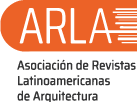Analysis of traffic congestion for the improvement of a main road in Guayaquil-Ecuador
DOI:
https://doi.org/10.13140/RG.2.2.21905.04960Keywords:
traffic congestion, vehicular traffic control, traffic signsAbstract
In Guayaquil-Ecuador, Av. Pedro Menéndez Gilbert is a main road with a designed capacity of 9000 vehicles/h, currently presenting traffic congestion problems, which affects its users. In order to propose possible solutions to the mobility problem, the research carried out aimed to analyze alternatives that would improve the level of service. The data collection method consisted of observation, with fieldwork at the entrance and exit intersections of a 900-m-long section. Manual counts and vehicle categorization were carried out for one week, as well as counting the distribution times of the traffic lights. The intersections were characterized in their geometry, traffic flows and traffic light system. Based on a previous study, a 5-year increase from 135,170 vehicles to 190,424 vehicles was projected. It was found that the main causes of congestion are the distribution of the alternating times of the signal cycle, and the blockage that occurs by the Metrovía feeder and collector buses. It is concluded that the main solution is the updating and proper adjustment of the traffic light system, as well as the opening of a pre-existing exit road, prior to the intersection, and control of the blockage produced by the Metrovía units
Downloads
References
[2] R. Méndez «Capacidad y Nivel de Servicio. Análisis de Capacidad y Nivel de Servicio de Segmentos Básicos de Autopistas, Segmentos Trenzados y Rampas» Manual de Capacidad de Carreteras HCM2000 aplicando MathCadHCM-2000 cap. 3, pp.43-48. 2000
[3] INEC, «Instituto Nacional de Estadísticas y Censos» Recuperado de: http://www.ecuadorencifras.gob.ec/documentos/web-nec/Estadisticas_Economicas/
Estadistica%20de%20Transporte/2016/2016_AnuarioTransportes_%20Principales%20Resultados.pdf. 2016
[4] A. Sarmiento, «Análisis situacional de la calidad de servicio del transporte terrestre público convencional urbano de pasajeros para plantear propuestas de mejora en la ciudad de Guayaquil» Guayaquil: Universidad Católica de Santiago de Guayaquil, pp. 36-43, 2014
[5] F. Moya, S. Huerta, y O. Carrillo, «Análisis del nivel de satisfacción de los usuarios del sistema integrado transporte masivo urbano de Guayaquil METROVÍA, Guayaquil» Revista Universidad y Sociedad, vol 9 , No 2 ,pp. 147-155, 2017
[6] CNC, Consejo Nacional de Competencias Registro Oficial N°413- Resolución 009. Ecuador, 2015
[7] NEVI-12-MTOP, «Ministerio de Transporte y Obras Publicas - Norma Ecuatoriana Vial» NEVI-12-MTOP, Recuperado de https://www.obraspublicas.gob.ec/wp-content/uploads/downloads/2013/12/01-12-2013_Manual_NEVI-12_VOLUMEN_2A.pdf. 2013
[8] H. Carpio, «Diseñar una propuesta de señalización horizontal y vertical para el centro de la ciudad de Loja bajo la normativa NEVI. 2012» Trabajo de titulación, Universidad Técnica Particular de Loja, Loja- Ecuador, pp.10-26, 2015
[9] R. Cal, M. Reyes, J. Cárdenas, «Ingeniería de Tránsito. Fundamentos y aplicaciones» Edición 8, Ed. A.G. editor, México D.F, pp. 9-28, 353-433. 2007
[10] N. Zamora, & O. L. Barrera. «Diagnóstico de la infraestructura vial actual en Colombia» Recuperado de: http://hdl.handle.net/10882/3405. 2012
[11] W. Vargas, M. Rincón, y C. González, «Ingeniería de Tránsito, Conceptos Básicos» Edición 1 Editorial Colección Espacios, Universidad Distrital Francisco José de Caldas, Bogotá, pp.37-58, 87-110, 255-267, 279-293. 2012
[12] CEPAL, «Congestión de tránsito-El problema y cómo enfrentarlo». Santiago de Chile, No 87, pp. 23-45. 2003
[13] C. Moyano, «Estimación de la contaminación del aire generada por efecto de la circulación vehicular motorizada en la Av. 10 de Agosto de la ciudad de Cuenca-Ecuador, usando la herramienta de micro- simulación de tránsito Aimsun 8.1», Cuenca, Tesis de Maestría, Universidad del Azuay, pp. 15-30, 2017
[14] C. Angarita, Pinto M. «Identificación y análisis de “cuellos de botella” que obstaculizan la movilidad en el corredor de la calle 56 perteneciente a la red vial del municipio de Bucaramanga» Univ. Industrial de Santander, Fac. Ing. Físico-Mecánicas, Esc. Ingeniería Civil, Bucaramanga-Colombia. 2017
[15] M. Cortez, M. Marca., «Análisis de la influencia del nuevo puente Guayaquil - Samborondón sobre el nivel operacional de la Av. Pedro Menéndez Gilbert, desde planta progreso Interagua hasta la escuela de infantería aérea» Trabajo de titulación, Universidad de Guayaquil, Facultad de Ciencias Matemáticas y Físicas, Guayaquil, pp. 32-59, 2018
[16] C. Mayor, y J. Cárdenas, «Ingeniería de Tránsito. fundamentos y aplicaciones» Edición 8. Alfaomega Grupo Editor, México D.F, 353-433. 2007
[17] CONSULTRANSE S.A. «Informe Operación Sector P. Menendez Gilbert y Plaza Dañin, Guayaquil-Ecuador » Consultoría optimizacion de planeamiento de la red semafórica de la ciudad de Guayaquil, unidad de Proyectos de Ingeniería Vial y de Transporte, R-LCC-EPMTG-001-2018
[18] A. Ordóñez, «Diseño semafórico y señalización vial del centro urbano de Saraguro» Tesis de Licenciatura, Universidad del Azuay, Cuenca, pp. 19-25, 102-104, 2016
[19] C. Fisk and S. Pallotion, «Empirical evidence for equilibrium paradoxes with implications for óptimal planning strategies. » TRANSPORT. RES. Vol. 15A, núm.3, pp. 245-248. 1981

Published
How to Cite
Issue
Section
The opinions expressed by the authors do not necessarily reflect the position of the editor of the publication or UCLA. The total or partial reproduction of the texts published here is authorized, provided that the complete source and electronic address of this journal is cited. Authors have the right to use their articles for any purpose as long as it is done nonprofit. The authors can post on the internet or any other media the final approved version of their work.






.png)




